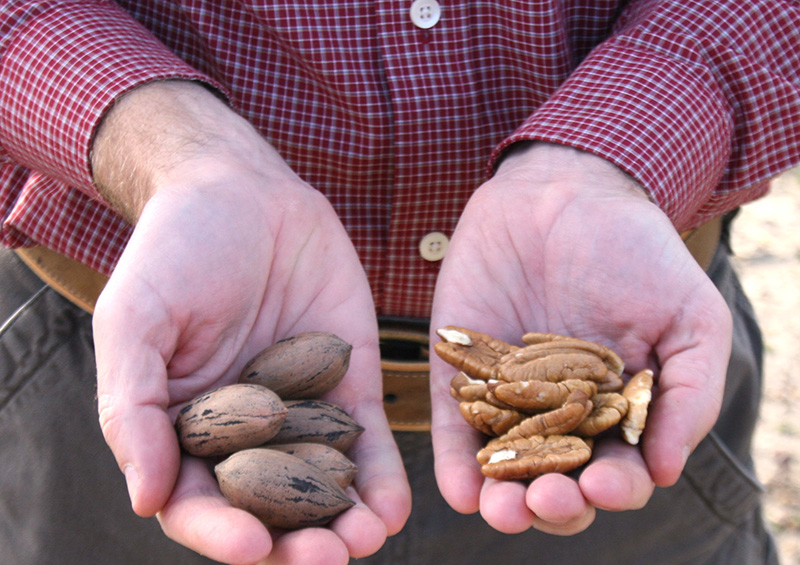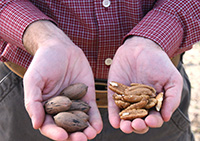Favorable prices and high yields were the highlights of this year’s pecan season for Georgia growers, according to University of Georgia Cooperative Extension pecan specialist Lenny Wells.
Wells said that prices tend to drop later in the season, but this year, prices increased. Despite the negative impacts of hurricanes Hermine and Matthew as well as a prolonged drought late in the summer and through most of fall, Wells predicts a good year for Georgia’s pecan crop.
“The yield was better than last year’s,” Wells said. “There is always a lot of variability in the size and quality of the crop from one location to the next and from one orchard to the next, but overall I would guess (that the yield is) probably 10 to 20 million pounds better than last year, at least, for the state. And prices were as high as we’ve ever seen them. I think we’re starting to see some of the young trees from the planting boom kick in and contribute to the state’s overall yield.”
Hurricane Hermine moved through Georgia during Labor Day weekend last year and damaged many pecan trees throughout south and southeast Georgia. In early October, Hurricane Matthew moved up the East Coast and damaged or destroyed trees from Appling County through Tattnall County, Georgia. The two storms blew down trees, snapped limbs and blew immature nuts from the branches.
Wells also said that the drought that occurred in the fall prevented or delayed some of the shucks from opening. As long as growers continued to irrigate their crops, the shucks should have opened, even if a little late, Wells said. Dryland orchards had a much more difficult time, however.
“Dryland orchards had pecans that were small or of low quality. Some shucks never fully opened up,” Wells said.
Mother Nature also wreaked havoc on pecan production in January. The tornadoes and strong winds that impacted south Georgia from Jan. 20 to Jan. 22 destroyed many acres of pecan trees, especially in Dougherty County, which suffered storm damage just after New Year’s Day. Dougherty County was the top producer of pecans in Georgia in 2015, according to the UGA Center for Agribusiness and Economic Development.
“It’s hard to get a handle on exactly how extensive the damage from the tornadoes was for our pecan growers. I know of numerous orchards with many trees down. I’ve talked with one grower in the Albany, (Georgia,) area with 500 trees down, another 50-acre orchard in which every tree was laying on the ground and, of course, lots of isolated trees and many limbs down all along the storm’s path,” Wells said.
Additionally, the recent severe weather has stressed some orchards, making them even more susceptible to insect pressure, specifically ambrosia beetles. In a recent post on the UGA Pecan Team’s blog at blog.extension.uga.edu/pecan, Wells wrote that trees that stand in water for long periods, especially when they are breaking buds and trying to leaf out, are very attractive to beetles. While cold weather will slow the beetle’s flight, Wells expects it to pick back up when warmer temperatures return.
“Anyone planning to plant trees this year should try to get the trees in the ground no later than mid-February to aid in recovery from transplant shock before budbreak and warm weather arrive,” Wells wrote in his blog. “Trees planted late become more stressed and have a harder time recovering from transplant shock.”
Pecans are a huge industry in Georgia. The crop’s 2015 farm gate value was $361.3 million and the crop occupied more than 165,000 Georgia acres.








